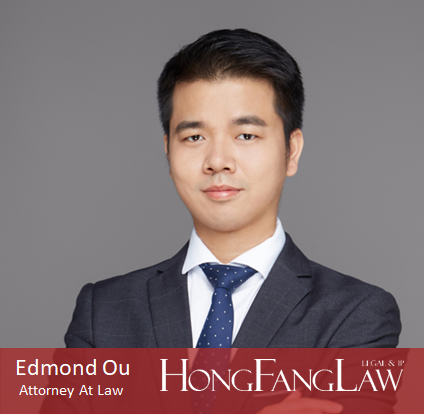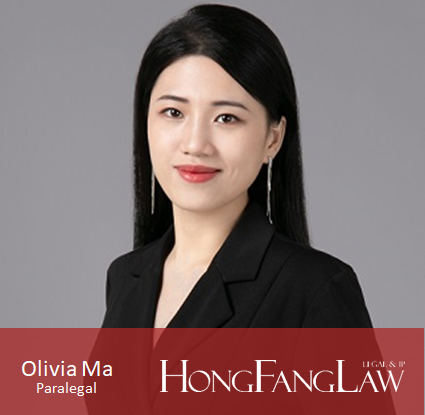Selling Counterfeit TM Goods
Applicable conditions of “Actual Average Selling Price” in the cases of selling goods with counterfeit registered trademarks
When we talk about the conditions for applying “average price in actual sales” to the cases of selling goods on which a falsely registered trademark is used, it is inevitable to talk about the concepts of “sales amount”, “illegal business amount”, etc.
Before the introduction and implementation of the Eleventh Amendment to the Criminal Law (hereinafter the “Eleventh Amendment”), the sentencing for “the crime of selling goods on which a registered trademark is falsely used” is determined by the “sales amount” according to the criminal law. After the Eleventh Amendment, it is determined by the “illegal amount” and the “circumstances of the crime”. Without a new judicial interpretation of the sentencing criteria, the judicial interpretation introduced in 2004 is still in effect. The “sales amount” for determining the sentencing of the crime of selling goods on which a registered trademark is falsely used, may be included in “other serious circumstances” or “other extremely serious circumstances” of the newly revised law. Based on current judicial practices, courts in many regions still mainly use “sales amount” to determine sentencing. In light of this, the discussion on how to determine and calculate the “sales amount” is still relevant.
Article 9 of the Interpretation of the Supreme People’s Court and the Supreme People’s Procuratorate on Several Issues Concerning the Specific Application of Law in Handling Criminal Cases of Infringement of Intellectual Property Rights (hereinafter the “2004 Interpretation”) issued in 2004, has made a clear definition that “sales amount” refers to the total illegal income obtained and due from selling goods on which a registered trademark is falsely used. Article 8 of the Opinions of the Supreme People’s Court, Supreme People’s Procuratorate, and Ministry of Public Security on Several Issues Concerning the Application of Law in Handling Criminal Cases of Infringement of Intellectual Property Rights (hereinafter the “2011 Opinions”) issued in 2011, has clearly specified the circumstances that constitute criminal attempt of selling goods on which a registered trademark is falsely used. According to the definition of “sales amount”, the 2004 Interpretation, and the 2011 Opinions, “sales amount” probably only involves the consummated crime of selling goods on which a registered trademark is falsely used while it does not involve a criminal attempt. The main reason should be that lots of attempted cases occurred in judicial practice since 2004, so the circumstances of criminal attempts were added and clarified in the 2011 Opinions. Therefore, we should not understand “sales amount” solely by definition, which is narrow and only involves consummated crimes. When we talk about a criminal attempt of selling goods on which a registered trademark is falsely used, we should interpret “sales amount” as “criminal amount” in a broad sense. Some judicial practices have confirmed this viewpoint. In cases suspected of selling goods on which a registered trademark is falsely used (cases of criminal attempts), some procuratorates refer to the money involved in the case as “sales amount” (here the “sales amount” is interpreted in a broad sense), while some other procuratorates refer to it as “criminal amount”.
Calculating the sales amount in attempted cases inevitably involves “illegal business amount”. Although in criminal law, the sentencing for the crime of selling goods on which a registered trademark is falsely used is not determined by the “illegal business amount”, by definition the “illegal business amount” refers to the worth of goods on which a registered trademark is falsely used, seized and actually sold in the business premises. “Sales amount” is connoted in the definition. Therefore, Article 12 of the 2004 Interpretation regarding the calculation of the illegal business amount can serve as the basis for calculating the sales amount in cases of criminal attempts of selling goods on which a registered trademark is falsely used.
According to the calculation method of “illegal business amount”, the value of unsold infringing products shall be calculated based on the price tag or the average price in actual sales of the infringing products. When there is no price tag for the infringing products or the average price in actual sales cannot be identified, the value of unsold infringing products shall be calculated based on the middle price of the infringing products in the market. Therefore, the method for calculating the sales amount of unsold infringing products depends on the situation. When there is a price tag or average price in actual sales that has been identified, the sales amount of unsold infringing products shall be calculated based on the above-mentioned price. When there is no price tag or the average price in actual sales cannot be identified, it shall be calculated based on the middle price of the infringing products in the market. However, in most cases, due to the reason that the sales channels of the criminal offenders are quite covert and diverse, the infringing products do not have a price tag and it is hard to identify the actual sales price of the infringing products, which makes it impossible to calculate the average price of the infringing products in actual sales. In such circumstances, the procuratorate or the court usually uses the “middle price of the infringing products in the market” to calculate the sales amount. Generally, the average price of the infringing products in actual sales is lower than the middle price of the infringing products in the market. Choosing which price to calculate the sales amount will directly or indirectly affect the sentencing. Therefore, for criminal suspects, it is extremely important whether the average price of the infringing products in actual sales can be identified, which is also one of the main defense tasks of the attorneys during the court hearing.
Firstly, to identify the average price of the infringing products in actual sales must meet the condition that the evidence in the case can prove that the offender has actually sold a certain style/model of counterfeiting products of a certain brand. Whether the offender’s actual sales of infringing products are prosecuted as criminal facts is not a necessary precondition. In judicial practice, although the defendant has actually sold the infringing products, the procuratorate usually will not prosecute the defendant’s actual sales of infringing products as alleged crime facts due to lack of evidence. At this point, if the court holds that the evidence is irrefutable and sufficient and that the average price of the infringing products in actual sales can be identified, the sales amount can also be calculated based on the average price of the infringing products in actual sales. The case of TIAN Longquan and HU Zhihui selling goods on which a registered trademark is falsely used (Criminal Trial Reference, case No. 675, 2011, Volume 1 of 78) is a case in point. Then, what pieces of evidence are generally required to identify the average price of the infringing products in actual sales? Although the evidence criteria vary among different courts, all courts determine based on cautious examining attitude, life experience, and common sense. Identifying the average price of the infringing products in actual sales requires a complete evidence chain, that is, the pieces of evidence in the case can prove that the actual sales price corresponds to the name, model/style of the infringing product. The evidences include but are not limited to the following: 1) The defendant’s statement and defense; 2) Testimony from witnesses such as the defendant’s employees and downstream sellers; 3) Sales account book, delivery note, receiving note, etc. Among them, Evidence 1 and 2 are verbal evidence, which is variable and cannot be used as a basis for determining a case. They must be supported by other physical or documentary evidence. As for Evidence 3, its content must accurately reflect the actual sales price of a certain type of infringing product of a certain brand. If the actual sales price and the infringing product do not match, it does not fall within the identifiable range. Secondly, judging from life experience and common sense, the actual sales price is not intentionally fabricated and is not obviously too high or too low.
When the criminal suspects sell the goods on which a registered trademark is falsely used, mostly the sales price for a certain type of infringing product is not fixed. Usually, the actual sales price depends on the sales target and the sales quantity. Even with the same sales target, there may be different sales prices at different times. This is why it is necessary to calculate and determine the “average price in actual sales”. In judicial practice, some courts may determine that the average price of the infringing products in actual sales cannot be identified on the grounds of uncertain quantity and sales price variation, and then apply the middle price of the infringing products to calculate the sales amount. Some other courts may determine the average price in actual sales based on several actual sales prices that have been identified.
Conclusion
Based on the principle of equity, if the existing evidence in the case can prove that the defendant has actually sold goods on which a registered trademark is falsely used while the defendant denies it, such circumstance will be deemed as “unable to identify the average price of the infringing products in actual sales” and the sales amount will be calculated based on the middle price of the infringing products in the market. On the contrary, if the existing evidence in the case can prove that the defendant has actually sold goods on which a registered trademark is falsely used and the defendant admits it, and there is sufficient evidence to prove the actual sales price of each infringing product, then the sales amount will be calculated based on the average price in actual sales. Such a way curbs and cracks down on the crime, and conforms to the principle of commensuration of crime, criminal responsibility, and punishment. However, it is noteworthy that, if the procuratorate applies the “middle price of the infringing products in the market” during prosecution while the defendant and his/her attorney hold that it shall apply the “average price of the infringing products in actual sales”, the principle of that “he who claims provides evidence” in civil litigation shall be applied to such cases in terms of the burden of proof.
Authors:


